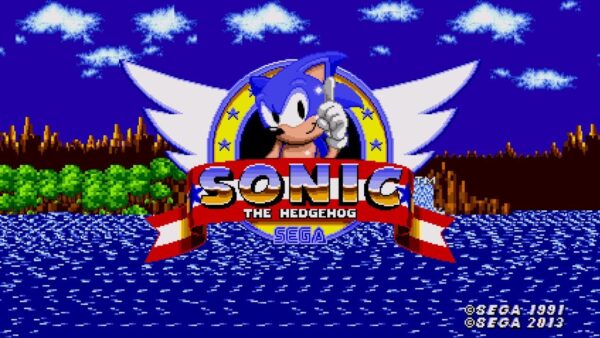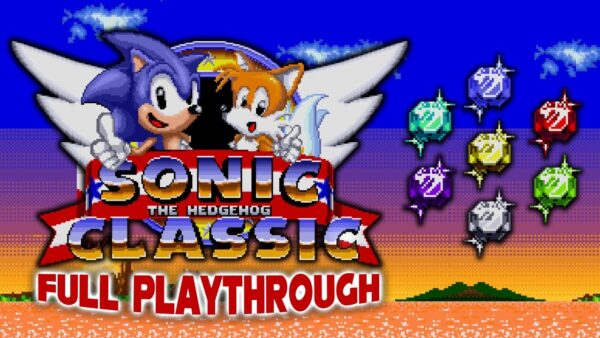Popular Now
Introduction
Sonic the Hedgehog™ Classic, released in 1991 for the Sega Genesis, is often praised for its blazing speed, colorful levels, and catchy music. But beneath the surface lies a frustrating and complex issue—momentum inconsistency. Though the game markets itself as a high-speed platformer, the way Sonic moves doesn’t always reflect that promise. In some zones, momentum is thrilling and rewarding. In others, it is interrupted, ignored, or outright punished. This article explores the depths of this issue by tracing its impact across various stages of the game, examining the underlying technical causes, and analyzing the long-term influence on game design.
The Original Vision: Blending Speed and Platforming
Before examining the problem, it's important to understand what Sonic was trying to achieve. The developers wanted to create a platformer that stood out from Nintendo's Mario by focusing on fluid motion and speed. Sonic’s physics were designed to simulate real-world momentum: acceleration, inertia, rolling, and slope-based movement.
However, this vision quickly created internal conflict. The game had to balance fast movement with precision platforming—two things that don’t always go hand in hand. This tension between fluidity and control led to design decisions that created the momentum inconsistencies players still notice today.

Green Hill Zone: A False Sense of Flow
The game opens with Green Hill Zone, a level that feels fast, open, and empowering. Players race through loops, roll down hills, and bounce off springs. It teaches players that momentum is their friend.
But a closer look reveals cracks. If Sonic hits a slope at slightly the wrong angle or speed, he stops. Enemies are placed mid-slope to punish those who try to go too fast. Some areas reward precise walking instead of rushing. It’s a bait-and-switch: the level promises speed but subtly punishes it at key moments.
Marble Zone: Speed Becomes a Liability
In stark contrast, Marble Zone slows things down to a crawl. There are lava pits, slow-moving platforms, and traps that require patience, not speed. Sonic’s momentum-based rolling is useless here.
The level design punishes those who try to maintain the fast playstyle from Green Hill Zone. Attempting to roll or jump quickly usually ends in a fall or a hit. Players are forced to stop, wait, and inch forward—completely at odds with Sonic’s core identity.
Spring Yard Zone: Start-Stop Frustration
Spring Yard Zone tries to reintroduce speed but does so inconsistently. Large open areas allow Sonic to build up momentum, only to be interrupted by bumpers, awkward vertical shafts, or sudden enemies.
Springs often send Sonic flying at strange angles, breaking player expectations. Instead of maintaining momentum, Sonic bounces in directions that don’t align with his previous movement. This jarring shift makes it hard to predict what will happen next and forces players into a trial-and-error approach.

Labyrinth Zone: Momentum, Drowned
Labyrinth Zone is infamous for stripping Sonic of his speed. Set mostly underwater, this level slows down movement dramatically. Sonic walks like he’s underwater (because he is), and jumping becomes floaty and imprecise. Rolling doesn’t work here.
This is where momentum becomes completely irrelevant. A game designed around movement suddenly becomes about survival, air bubbles, and slow-paced puzzle navigation. For players hoping to build momentum and flow, Labyrinth Zone is a complete betrayal.
Star Light Zone: Brief Return to Harmony
Star Light Zone finally returns to the game’s original promise. With open slopes and wide ramps, this level allows players to move quickly and fluidly again. It feels like a reward after the frustration of previous zones.
However, it’s not perfect. See-saw platforms and exploding traps still interrupt momentum in ways that feel unfair. But overall, this zone is one of the few that consistently supports Sonic’s core physics engine.
Scrap Brain Zone: Momentum in Chaos
Scrap Brain Zone is chaotic and dense. Conveyor belts, moving saws, rotating platforms, and instant-death traps dominate the screen. Speed is no longer an advantage. In fact, going too fast often leads to instant death.
Sonic’s momentum here feels less like a tool and more like a hazard. Fast movement causes missteps, and slow movement exposes the player to tricky patterns. The result is a zone that feels punishing and inconsistent with the rest of the game’s intended identity.

Boss Fights: Momentum Becomes Irrelevant
Almost every boss fight in the game takes place in a small, flat arena. There are no hills to roll down or slopes to accelerate on. Sonic’s ability to build speed is completely unnecessary in these battles.
This design decision strips Sonic of what makes him unique. He may as well be Mario during these sections, jumping in place and dodging simple patterns. The physics engine—carefully built for movement—is rendered irrelevant.
Why Does the Inconsistency Happen?
The Sega Genesis hardware was limited, and Sonic’s original physics engine was coded under tight constraints. Momentum in the game depends on slope angle, surface friction, and current velocity. These calculations are easily broken by specific level geometry or scripted elements like springs and underwater zones.
Some elements override momentum entirely. Springs, for instance, ignore current velocity and launch Sonic with pre-set power. Underwater physics rewrite the rules completely. Rolling speed depends on walking speed, not raw momentum, making it hard to maintain fluid control.
Legacy and Lessons for Game Design
Despite these flaws, Sonic became a massive success. But the issue of inconsistent momentum haunted the series. Later games like Sonic CD, Sonic 2, and Sonic Mania refined the engine to allow for smoother transitions and more consistent mechanics.
More importantly, Sonic’s early struggles taught game designers that physics engines must align with level design. Games like Celeste and Super Meat Boy offer consistent movement feedback that builds player skill. Sonic’s inconsistency remains a historical lesson in what happens when gameplay mechanics and level design are out of sync.
Conclusion
Momentum inconsistency in Sonic the Hedgehog™ Classic is not a minor issue—it’s a central flaw in the game’s design. While the game sold the fantasy of speed and movement, it often failed to deliver it in a consistent, fair, or rewarding way. From Green Hill to Scrap Brain, Sonic’s momentum was alternately celebrated and punished.
This inconsistency has shaped both the legacy of Sonic and the future of platforming. It remains a reminder that game design must be more than ideas—it must be coherent, consistent, and respectful of the player’s expectations.


















